Blog: How Much Money Do I Need To Start Selling on Amazon?
How Much Money Do I Need To Start Selling on Amazon?
I have had my moment sharing the brilliance of the Amazon FBA business model, so I won’t go over that again (spoiler alert: it’s the greatest opportunity of the decade). Once we get to the nuts and bolts of what is needed to sell on Amazon, then I encounter the most pressing and common question: how much money do I need to get started? Absolutely a fair question. And my fair, yet unsatisfying answer: it depends. In this post, I want to review some of the different services and costs you will need in order to start selling on Amazon.
As I want to make this as universally applicable and helpful as possible, I am going to make some broad assumptions so you can tailor this to your specific needs. Do you remember those “Choose Your Own Adventure” books from back in the day? Different twists and turns at each part of the journey, and your experiences vary depending on the decisions you make along the way. Selling on Amazon is not too different than that. And here we will have different paths that we can take along the way. So buckle up, it’s time to get into the nitty gritty fun of launching a product on Amazon!
First the assumptions that we are making:
- We will sell on the Amazon US store (and we are based in the US)
- The retail cost of the product (ie the amount that we will sell it for on Amazon) will be $20.
- The landed cost of our item (product manufacturing, including packaging, plus shipping all the way to Amazon warehouses) is $4.
- The product will be standard size—it can fit in a shoebox.
- The product will be light enough to ship by air
- We will purchase with 500 units to sell
- We plan to give away 50 units for promotions
- We aim for 100% Return on Investment
- We will sell our product as a private label product, and not retail arbitrage. This allows for greater scalability in the future.
Can you guess what the product is? I listed the above points without any particular product in mind, but let’s make this a concrete example and suppose we want to sell jump ropes.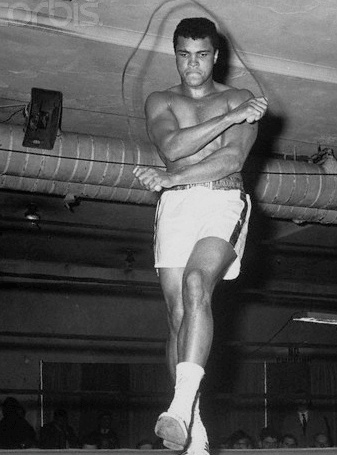
Quick aside, jump ropes are a fantastic exercise for digital nomads. If it's good enough for the Greatest Of All Time, it's good enough for me! RIP Champ.
When determining how much it will cost us to start, I am breaking down the costs into three categories: the “must have”, the “nice to have”, and the “luxury item” costs.
The Must Have Items To Launch:
Samples:
If you saw our webinar on finding suppliers overseas, you will know that getting a sample of the product before you start is imperative. There can be a significant gap between the quality and specifications you see online on Alibaba, and the actual product that they manufacture. There is only one way to verify the product quality, and that is by ordering a sample.
After you have done your product research, decided on your product, and found various suppliers, I would narrow down the list to 3 suppliers that you like. This means that they can supply you with the product specifications you need, at the cost you want, while meeting your needs as far as communication.
So once you find potential suppliers, I recommend getting a sample from each of them. You will have to pay for the cost of the product, plus shipping. Sometimes a supplier will reimburse you for these costs if you order from them, but let’s assume that will not be the case. And to be conservative, meaning estimate a higher cost, each sample will cost $100 to get a sample to your doorstep within 5 days.
COST
So that is $100/per sample, for 3 samples = $300
Inventory
Once you choose your supplier, it’s time to put down some money to purchase your product! Suppliers that you find on Alibaba will generally have a Minimum Order Quantity (MOQ), but we also decided that we wanted to purchase 500 units. Based on our assumption above, the product will cost $4 per unit, which includes the cost of the product and air shipping.
You can reduce this cost by ordering fewer units, or choosing a cheaper product. By this, I mean a lower-cost product that you would sell at a lower price point, and not necessarily a cheaper quality product of shoddier quality.
COST
This amounts to $4/per unit, for 500 units = $2000
Promotional Giveaway
We have allocated 50 products that we will give away at a reduced cost in order to get some quick reviews and improve our organic ranking right off the bat. You can use Review Kick to get reviews while staying safely within Amazon’s Terms of Service and getting your product in front of thousands of Amazon reviews. Full disclosure: I started Review Kick, and there are other alternative launch services or private groups you can join, but the onboarding and speed that Review Kick offers is invaluable in launching.
COST
The cost is $30 for one month of the Promotional Giveaway service.
Amazon Professional Sellers Account:
Whether you have an Individual Sellers Account, or a Professional Sellers Account, you will have to pay Amazon to list your product on their platform. The Individual Account is basically $1 per item sold, and the Professional Sellers Account is $40 per month. Let’s plan, and hope, that we sell more than 40 units per month, in which case a Professional Account makes more economical sense.
Furthermore, you will need a Professional Sellers Account in order to do things like generate promotional codes, which you’ll need for your Promotional Giveaways. This is a cost you need to consider, but you will not need to spend this capital upfront, as it will be deducted directly from your Seller's account.
COST
The monthly cost of being a seller on Amazon is therefore $40 per month.
Nice-To-Have Items:
Sponsored Ads Budget
Sponsored ads are helpful to get your product sales improving quickly. As you generate more sales (and get more reviews with follow up email campaigns), you will also see an increased organic ranking for your main keywords. And it is surprisingly attainable to get profitable paid campaigns with Amazon’s platform.
Let’s assume that you are running campaigns at $10 per day. This should also generate a few sales for you, so it is not a “cost” per say, but moreso an “investment”. Regardless, you will need the capital upfront.
COST
$10 per day for 30 days is $300.
Luxury Items (Not Necessary In Order to Launch)
These are items that you definitely do not need, but could use if you want to have a thoroughly polished product launch.
A graphic designer is a tremendous asset in adding legitimacy to your brand. A graphic designer can craft a beautiful logo, marketing collateral like package design, and touchup your product photography. The sky is the limit as far as how much a graphic designer will cost you, but if you go to Upwork or Fiverr, you could get the job done for as little as $50. I am not necessarily recommending cutting corners on these costs, but there is no direct correlation between price and quality.
We used some photoshopping skills to recreate “lifestyle” shots with our bamboo marshmallow sticks, added to a stock photo:
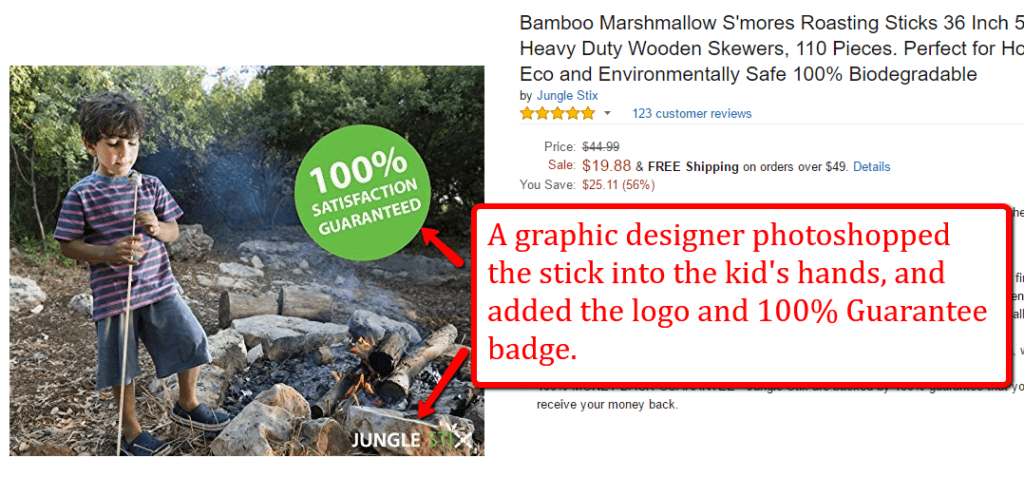
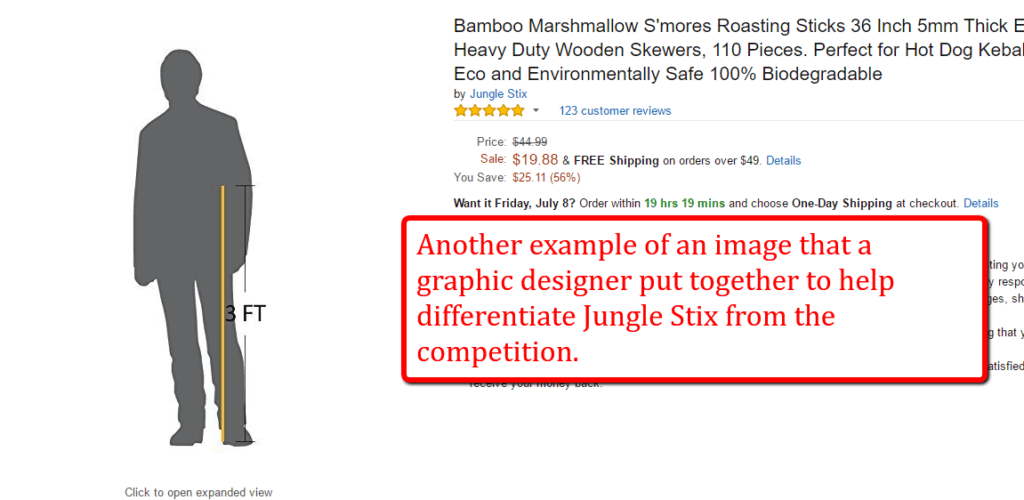
COST
$200 for design on logo, packaging, and photoshop services.
Product Photography
I can not overstate the importance of high resolution and high quality product photographs. When you are competing against other sellers who may have similar products, it is so critical to have your product stand out from the crowd. Remember, in order to get a visitor to your Product Page, they are going to have to be enticed to click on your product listing. In the fast-paced, purchase-oriented mind of the shopper, they are scanning for visual cues.
Try to get the best lighting possible, a white background, and at least 1000 pixels on the longest side of the image in order to meet the minimum resolution for the hover-to-zoom effect.
Which of these two jump ropes would you choose?
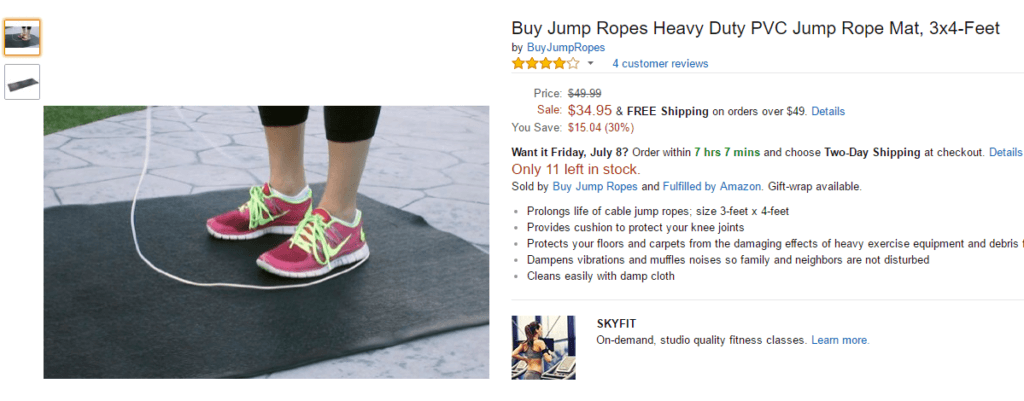
EXAMPLE 1: YOU CAN’T SEE MUCH ABOUT THE ACTUAL QUALITY OF THE JUMP ROPE IN THIS MAIN IMAGE.
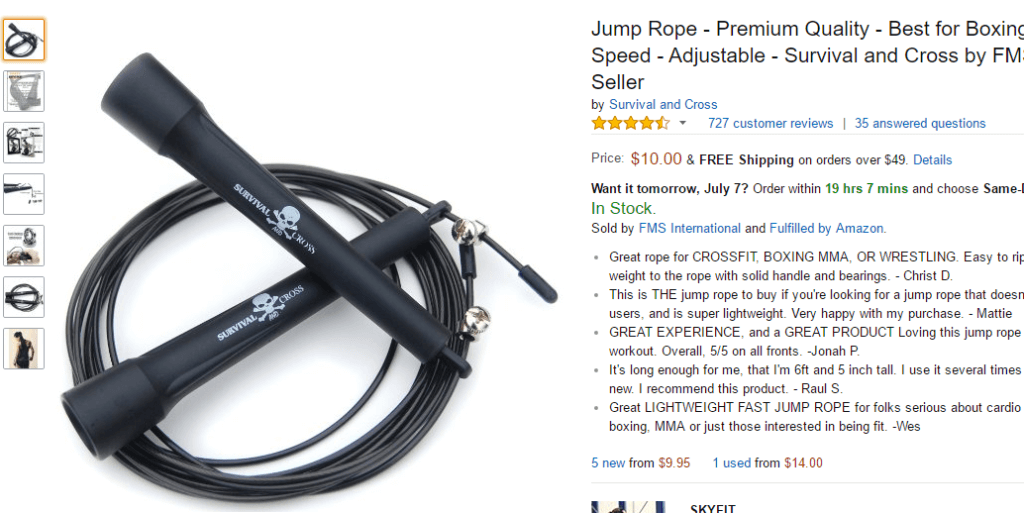
EXAMPLE 2: THE QUALITY OF IMAGE IS MUCH BETTER ON THIS JUMP ROPE.
You can get high quality product photographs at $25-$50 per image. Let’s assume you want 8 images, and negotiate them for $300.
COST
$300 for 8 professional quality product images.
So let’s start tabulating what the total costs are:
Must Have Items:
$2330
TOTALProduct Samples: $300
Inventory: $2000
Promotional Giveaways Software: $30
Nice to Have Items:
$300
TOTALSponsored Ads: $300
Luxury Items:
$500
TOTALGraphic Design: $200Product Photography: $300
How Can You Reduce These Costs?
You can reduce your startup costs significantly if you source your product on Aliexpress instead of Alibaba. Aliexpress will allow you to order smaller quantities and test the waters before investing in a bulk order. The downside to this though is that you are paying a higher per-unit cost on Aliexpress. And you can not necessarily get the customizations that you want (product specifications, branding, packaging, and more), because Aliexpress sellers are often resellers themselves.
If you opt for Aliexpress, much of these costs can fall by the wayside, because you will not be investing in building your own private label brand.
The key variable here is how much time and effort you are willing to invest in launching your product. If you are strapped for time, but still want to move forward with product research and product sourcing, you can outsource many of these steps. Virtual assistants can be a fantastic cost-effective asset for you, to move your project forward. This is an especially valuable help to accomplish things that get pushed to the bottom of your to-do list, but are bottle necks to moving forward. This could be finding suppliers, ordering samples, writing your listing copy, taking product photos, and much more.
When people ask how much it would cost to launch a product, I think many people are ultimately interested this question: “what is the minimum necessary investment in order to sell on Amazon?” If we keep the calculations the same, I think one of the variables that could be altered in order to reduce startup costs is the Minimum Order Quantity, and the product that you choose to sell.
In our example, we chose a product that is $4 fully landed, and we chose to purchase 500 to start. There are legitimate products with high potential that you can purchase on Alibaba for $0.50. Assuming a $0.25 shipping fee per unit, that could cut your starting inventory costs to $325 (500 units multiplied by $0.75). Add in the samples ($300, assuming you opt to get samples), Amazon sellers fee ($40), and launch service ($50), and you are looking at $715 in upfront investment.
Things I would not spend money on:
Legal Fees: Just to be clear, you do not need to incorporate anything in order to sell on Amazon. I am not a lawyer and not qualified to give legal advice, however, I know a lot of Amazon sellers choose to start without any legal structure like an LLC. A lot of people choose to do this down the road, if you find it a necessary step. However, in the beginning stages, it is a distraction and probably an unnecessary expenditure.
Your own website: Similar to legal fees, setting up your own website is an unnecessary distraction if you are just starting. It should be your top priority to drive traffic to your Amazon listing (by optimizing your product listing for your main keywords and using PPC), you don’t need to worry about driving traffic to a standalone site. It takes time and money, and we are trying to be as prudent as possible with both of these precious resources at this point!
Your own email: It is very easy to set up an email with your own custom domain using Google Apps for Business. It costs about $5 per month. And some people think that it adds legitimacy when they are reaching out to suppliers. While I don’t disagree with this, I have never done so myself, and I have not encountered any problems as a result.
Final Thoughts
I intentionally did not include any mention of Jungle Scout in the above post, because I do not want readers to think that this is a self-serving post, and I don’t want your opinions skewed by any mention of the product I created. You can certainly find opportunities without any product research tool, if you are willing to make the tradeoff of more time, and less certainty. I have covered my “old skool” techinique of product research without any paid software in this video, so you can use that to your advantage.
However, as the primary goal is to establish a scalable and profitable business, I think it is a worthwhile investment to help you come up with, and validate, your product idea before you spend upwards of a thousand dollars on your business.
So to close this post, I think that we have quantified what it takes to start a business on Amazon: roughly $2000 to $2500, depending on your product and quantity purchased. My goal with every product that I source is to make a 100% Return on Investment. So taking this example, if I were to invest $2000, I would expect to make $2000 after selling all of the products. I posted an FBA Profit Calculator in a recent post to help calculate Return On Investment after accounting for various FBA fees, you can see the post here.
If you have any recommendations on how to reduce this upfront investment, please share it in the comments! And if I am missing something that you consider a “must-have” item, let me know and I will address it. Good luck to you, you can most certainly make your own success with the right formula of work ethic, strategy, and determination. Onwards!
